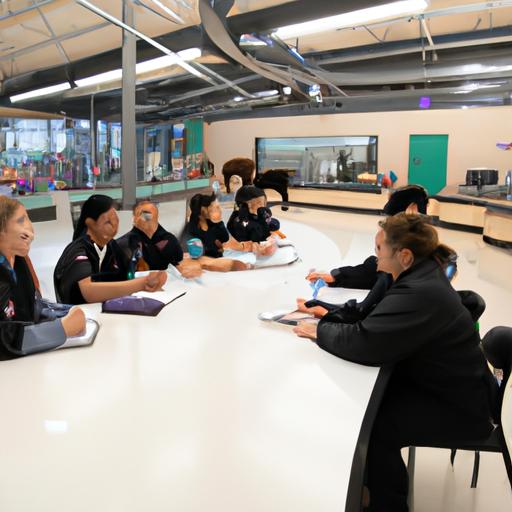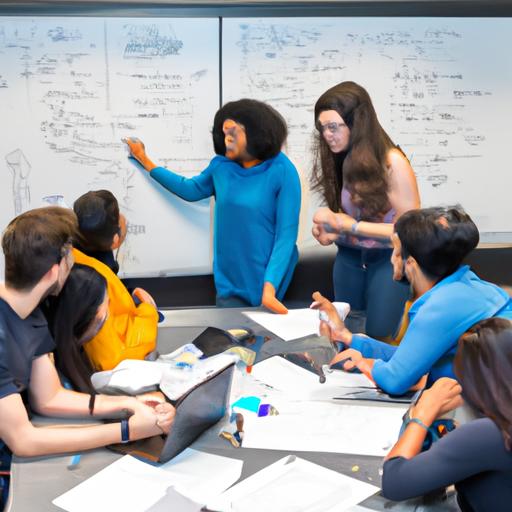How Long Does It Take to Be a Radiology Tech?
Introduction
Are you considering a career in radiology technology but unsure about the time commitment it entails? Let’s delve into the journey of becoming a radiology tech and uncover the duration it takes to reach this rewarding career milestone. Radiology technology is a dynamic field that plays a crucial role in healthcare, utilizing cutting-edge imaging techniques to diagnose and treat various medical conditions. However, before embarking on this career path, it’s essential to grasp the significance of the time and dedication required to excel in this field.
Understanding the time commitment needed to become a radiology tech is paramount for aspiring individuals. From the educational requirements to hands-on training, every step in this journey contributes to shaping a competent and skilled professional in the realm of radiology technology. Let’s explore the timeline and milestones involved in pursuing a career as a radiology tech.
Education and Training Requirements
Educational Path to Becoming a Radiology Tech
Embarking on the journey to become a radiology tech involves navigating through a structured educational path. Typically, individuals interested in this field pursue a radiology technology program offered by accredited institutions. These programs provide comprehensive training in various imaging techniques, radiation safety, anatomy, and patient care. The educational curriculum equips students with the necessary knowledge and skills to excel in the field of radiology technology.
Required Certifications and Licensing
Upon completion of a radiology technology program, aspiring radiology techs must obtain the required certifications and licenses to practice professionally. One of the essential certifications is the American Registry of Radiologic Technologists (ARRT) certification, which demonstrates competency in the field. Additionally, obtaining a state license is mandatory in most regions to ensure adherence to regulatory standards and patient safety protocols. Meeting these certification and licensing requirements is crucial for individuals aspiring to pursue a career as a radiology tech.
Importance of Completing a Radiology Technology Program
Completing a radiology technology program is a fundamental step in the journey to becoming a proficient radiology tech. These programs provide a structured learning environment that combines classroom instruction with hands-on clinical experience. Through these programs, students develop practical skills, critical thinking abilities, and a thorough understanding of radiology technology principles. The comprehensive education and training received during these programs prepare individuals to deliver high-quality patient care and contribute effectively to the healthcare system.
Duration of Radiology Technology Programs
Typical Length of a Radiology Technology Program
Radiology technology programs typically vary in length depending on the level of education pursued. A certificate program may take around 1-2 years to complete, providing a condensed curriculum focusing on essential radiology skills. On the other hand, an associate’s degree program typically lasts 2-3 years and offers a more comprehensive education, including general education courses alongside radiology-specific training. For those aiming for a higher level of education, a bachelor’s degree in radiology technology can take 4 years to complete, offering a deeper understanding of radiologic sciences.
Factors Affecting Program Length
Several factors can influence the duration of a radiology technology program. These factors may include the program’s structure, such as full-time versus part-time enrollment options, as well as the student’s ability to complete coursework at an accelerated pace. Additionally, clinical requirements and internship hours play a significant role in program length, as hands-on training is a vital component of a radiology tech’s education.
Comparison of Different Program Types
When considering different types of programs, such as certificate, associate’s degree, and bachelor’s degree programs, it’s essential to weigh the benefits and drawbacks of each. Certificate programs offer a quicker path to entering the workforce but may have limited advancement opportunities. Associate’s and bachelor’s degree programs provide a more comprehensive education but require a longer time commitment. Understanding the differences between these program types can help individuals choose the best path to achieve their career goals in radiology technology.
Clinical Training and Internship
Importance of Hands-on Clinical Training
Hands-on clinical training is a pivotal aspect of the journey to becoming a proficient radiology tech. This practical experience provides aspiring professionals with the opportunity to apply their theoretical knowledge in real-world settings. Engaging in clinical training allows students to hone their skills, develop critical thinking abilities, and gain firsthand exposure to various imaging techniques. By working directly with patients, equipment, and healthcare professionals, individuals can enhance their competency and confidence in the field of radiology technology.
Duration of Clinical Rotations and Internships
The duration of clinical rotations and internships can vary depending on the radiology technology program and institution. Typically, these hands-on experiences last several months and involve a structured curriculum that covers a range of imaging modalities and procedures. During this period, students work under the guidance of experienced radiology techs and healthcare professionals, gaining valuable insight into the day-to-day responsibilities of the role. The immersive nature of clinical rotations and internships enables students to refine their technical skills, communication abilities, and patient care techniques.
How Clinical Experience Prepares Students for a Career as a Radiology Tech
Clinical experience serves as a crucial stepping stone in preparing students for a successful career as a radiology tech. By engaging in hands-on training, individuals not only acquire technical proficiency but also develop essential soft skills such as teamwork, adaptability, and problem-solving. The practical exposure gained during clinical rotations and internships equips students with the confidence and competence needed to excel in diverse healthcare settings. Additionally, this real-world experience fosters a deep understanding of patient care, ethics, and professionalism, laying a solid foundation for a fulfilling career in radiology technology.
Certification Exam and Licensing Process
Overview of the Certification Exam for Radiology Techs
Once you have completed your education and clinical training as a radiology tech, the next crucial step is to sit for the certification exam. This exam assesses your knowledge and skills in the field of radiology technology, ensuring that you meet the standards set by the profession. The certification exam covers a range of topics, including anatomy, physiology, patient care, radiation protection, and image production. By successfully passing this exam, you demonstrate your proficiency and readiness to practice as a certified radiology tech.
Requirements for Obtaining a State License to Practice
In addition to passing the certification exam, aspiring radiology techs must also obtain a state license to practice in their respective jurisdiction. Each state has its own licensing requirements, which typically include submitting an application, providing proof of education and certification, and passing a background check. State licensing ensures that radiology techs meet the regulatory standards necessary to deliver safe and high-quality patient care. It is essential to familiarize yourself with the specific licensing requirements in your state to navigate this process smoothly.
Timeline for Completing the Certification and Licensing Process
The timeline for completing the certification and licensing process can vary depending on individual circumstances and the specific requirements of your state. Generally, it may take several weeks to months to prepare for and schedule the certification exam. Once you pass the exam, you can begin the application process for state licensure, which may involve additional paperwork and background checks. By efficiently managing your time and staying organized, you can streamline the process and achieve your goal of becoming a licensed radiology tech.
Conclusion
In conclusion, the path to becoming a radiology tech is a fulfilling and worthwhile journey that requires dedication and time. By understanding the educational and training requirements, the duration of radiology technology programs, the importance of clinical training, and the certification and licensing process, you can navigate this career path with confidence.
Remember, the time it takes to become a radiology tech may vary based on individual circumstances and program choices. However, with perseverance and a passion for healthcare, you can embark on this rewarding career path and make a difference in the lives of patients. Stay committed to your goals, seek out resources for support, and never underestimate the value of continuous learning and growth in the field of radiology technology. The journey may be challenging, but the rewards of making a difference in healthcare are immeasurable. Pursue your dreams, and you’ll soon find yourself thriving as a skilled and compassionate radiology tech.






